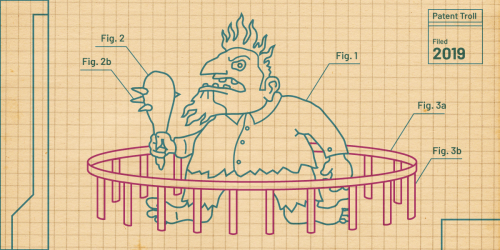In a promising step toward transparency, the Eastern District of Texas (the court that sees many of the nation’s patent cases) recently announced an amendment to its Local Rules that would require parties to file redacted versions of documents that contain confidential information. Previously, parties would file whole briefs under seal, without any public version being provided, even if only one word or line in the brief was claimed to be confidential. One of the few ways the public could protest against this improper sealing was to attempt to intervene in cases so as to require the parties and the courts to justify the sealing. But members of the public can’t possibly intervene to unseal in every case. This rule change is a step toward greater transparency.
EFF has, in recent years, worked to push back against oversealing, especially in patent cases where improper sealing is practically routine. We successfully intervened in several cases in order to provide greater transparency to the public.
For example, EFF recently successfully unsealed materials in the case of My Health v. ALR Technologies. We intervened after the parties filed numerous briefs and documents under seal relating to whether patent owner My Health (whose patent on telehealth we awarded Stupid Patent of the Month in May 2016) litigated its case in an exceptional manner. The court recently agreed to unseal a large amount of information previously withheld from the public.
EFF has also been pushing for greater transparency in the high profile patent litigation between Allergan (a branded pharmaceutical company) and generic companies who wish to make a lower cost version of the drug Restasis. The litigation took on new interest when Allergan announced it had “sold” its patents to the Saint Regis Mohawk Tribe in an attempt to shield the patents from scrutiny at the Patent Office.
Once news of the Allergan-Tribe deal became public, we watched as the parties filed briefs in the related district court case with the most relevant exhibits about the controversial deal being filed under seal, completely hidden from the public. Concerned about this level of sealing, we reached out to the parties and asked them to provide greater transparency, or at minimum, provide justification for the high level of sealing. In the end, Allergan refiled many of the papers, significantly limiting the amount of information withheld from the public.
The Eastern District of Texas’ new rule is a step in the right direction, although we believe it still falls short of what the law requires. We submitted comments regarding the new rules, applauding the positive step, but urging the court to recognize that it is the parties’ burden to show why materials should be kept from the public each and every time they submit documents to the court. The Reporters Committee for Freedom of the Press also submitted comments urging the court to do more to protect the public’s interest in court filings.
Beyond the courts, we have also been pushing for greater transparency at the Patent Office. We recently sought materials from the Patent Office related to the Allergan-Tribe deal (many of which were the same as those filed in court). In October, we sent a Freedom of Information Act (FOIA) Request to the Patent Office asking for records from the proceeding related to Allergan’s patents. There, the Tribe had asked the Patent Office to end the proceedings based on a claim of sovereign immunity. Once again, the most relevant information was filed completely under seal without any justification for withholding it from the public.
The fact that this material was under seal became particularly problematic when the Patent Office issued a call for public input as to whether sovereign immunity applied to the proceedings. The ability of members of the public to evaluate the deal and determine its nature was hampered by the fact that the public could not determine what, exactly, the deal was.
After we filed our FOIA request, the Patent Office asked the parties to explain why the materials were filed under seal and what justification there could be do withhold the information from the public. This led, again, to the materials being significantly unmasked.
In both the district court case and at the Patent Office, it is clear that parties are often sealing much more information than the law allows. It is only when challenged do they agree to reveal what should have been public in the first place. While we’re glad there has been greater transparency in the cases mentioned above, it should not take EFF (or anyone else’s) intervention before the courts and parties make public what should have been public all along.







